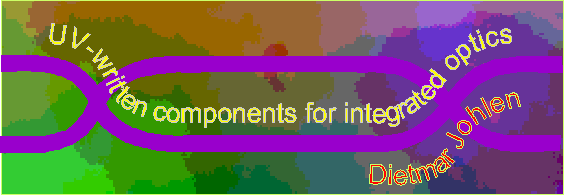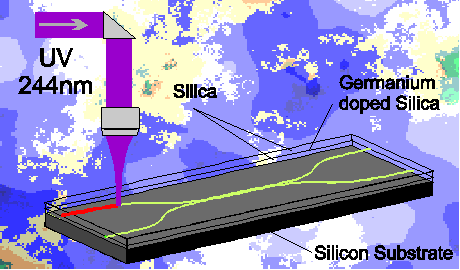

Photosensitivity is a well known effect in optical fibers. The refractive index of the core is increased by UV-irradiation. Responsible for this effect are broken Ge-O-Si bonds in the glass of the fiber core (bleaching of E' centers). The cladding is not affected since it is not Ge-doped.
The increase of refractive index is used to write gratings in the fiber. These gratings are very narrow band reflectors.
Since the index increase in fibers is in the order of 0.001 it is possible to define waveguides simply by UV-illumination. Thus the interest is also focussed on planar photosensitive structures.

The picture shows the material system I am currently working with. On the silicon substrates are three layers deposited by flame hydrolysis. The sample is sensitized by Hydrogen indiffusion at 300 bar for 10 days at room temperature. The bottom and the top layer consist of silica and the inner layer is silica doped with GeO2. The layers look like a cross section thru a fiber.
From top the UV beam is focussed on the inner layer. By moving the chip arbitrary waveguide structures can be written.
I'm using an Argon-Ion Laser, Innova Fred 300 by Coherent, at 244nm with 100mW cw UV-power.